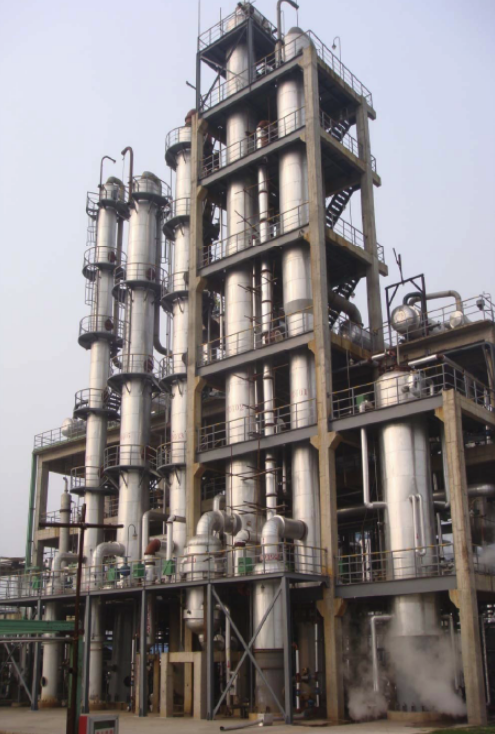How the Formic Acid Is Extracted and Manufactured?
Formic acid, with its molecular formula HCOOH, is a vital compound with a range of applications, from agriculture to chemical synthesis. Understanding the methods employed in the extraction and manufacturing of formic acid unveils the intricate processes involved in producing this versatile chemical. In this article, we explore the various approaches to extracting and manufacturing formic acid, shedding light on both traditional and modern methods.
Extraction of Formic Acid from Natural Sources
Ant Venom and Stinging Nettles
Believe it or not, one of the earliest sources of formic acid extraction was ant venom. Certain species of ants, such as the infamous red fire ant, inject formic acid as a defensive mechanism. By collecting and processing these ants, ancient civilizations were able to extract formic acid for various uses.
Stinging nettles, a common plant, also contain formic acid. Crushing and processing nettles released the acid, although this method was less efficient and sustainable compared to other sources.
Chemical Synthesis Methods for Formic Acid
Most of it is made from carbon monoxide, either by heating it with sodium hydroxide to produce sodium formate, which is then acidified, or via the base-catalyzed reaction of CO and methanol to make methyl formate, which is hydrolyzed to the acid. Formic acid is also a major byproduct of acetic acid manufacture.
Carbon Monoxide Hydrogenation
The most common and widely used method for manufacturing formic acid is through the catalytic hydrogenation of carbon monoxide. This process involves the following steps:
1. Carbon Monoxide Generation: Carbon monoxide (CO) is produced by various methods, such as the incomplete combustion of natural gas or the gasification of biomass.
2. Hydrogenation Reaction: Carbon monoxide is then reacted with hydrogen (H2) in the presence of a catalyst, often a metal catalyst like rhodium, to produce formic acid.
The chemical equation for the reaction is: CO + 2H2 → HCOOH
This method is highly efficient and allows for the large-scale production of formic acid.
Methanol Dehydrogenation
Another common industrial method for formic acid production involves the dehydrogenation of methanol. The process comprises the following steps:
1. Methanol Production: Methanol is synthesized from natural gas or biomass sources.
2. Dehydrogenation Reaction: Methanol is then dehydrogenated, usually with the help of a metal oxide catalyst, to yield formic acid.
The chemical equation for the reaction is: CH3OH → HCOOH + H2
This method offers an alternative route for formic acid production and is particularly relevant in regions with abundant methanol resources.
Biological Production of Formic Acid
Bacterial Fermentation
In recent years, researchers have explored biological methods for formic acid production. Some bacteria, such as Clostridium ljungdahlii, have been found to naturally produce formic acid during fermentation processes. By optimizing these biological pathways, it is possible to harness microbial systems for sustainable formic acid production.
Genetically Modified Microorganisms
Advancements in genetic engineering have allowed scientists to modify microorganisms to enhance their ability to produce formic acid. By introducing genes responsible for formic acid synthesis into bacteria or yeast, researchers can create efficient bio-based production systems.
Purification and Refining Processes
Regardless of the method used for formic acid synthesis, the obtained solution often requires purification to meet industry standards. Common purification methods include distillation and ion exchange processes. These techniques help remove impurities and achieve the desired concentration of formic acid.
Applications of Formic Acid
Formic acid finds applications in various industries, including agriculture, textiles, and pharmaceuticals. It is used as a preservative in silage, a tanning agent in the leather industry, and a reducing agent in certain chemical processes. Its versatility makes it a valuable compound in multiple sectors.
Safety Considerations and Handling
Formic acid is a corrosive and potentially hazardous substance, requiring careful handling and storage. Safety measures include the use of protective equipment such as gloves and goggles, proper ventilation in production facilities, and adherence to regulatory guidelines.
Conclusion
From ancient methods of extraction from ant venom to modern industrial processes, the production of formic acid has evolved significantly. Chemical synthesis, biological production, and refining processes contribute to the efficient and widespread availability of formic acid for various applications. As technology advances, researchers continue to explore sustainable and eco-friendly methods for formic acid production.
197
0
0


Comments
All Comments (0)